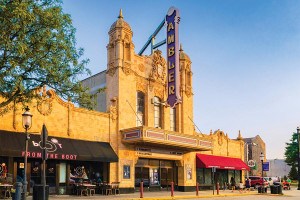Is Conshohocken Really “Younger, Wealthier, Whiter”?
This morning’s Philadelphia Inquirer features about the transformation of Conshohocken, which–as one reader said this morning–was considered a “ghetto” when she was growing up 30 years ago in Lafayette Hill. The borough has become–according both to the Inquirer and the April issue of Philadelphia Magazine–one of the Philadelphia area’s hottest neighborhoods. The Inky puts it in terms of demographics “Over the last decade, Conshohocken’s population has grown younger, wealthier and whiter, according to U.S. Census data.”
Well, not quite.
Staff writer Jessica Parks continues:
The black population dropped 6.5 percent from 2000 to 2010 as total population grew 3.2 percent. By 2040, borough officials project the total population to increase nearly 27 percent.
To conclude the population is “whiter” because of a 6.5 percent decrease in African-Americans over 10 years assumes that the borough is only home to white people or black people and ignores Census data about other races. In fact, Asian and Latino populations have both increased, as have the number of people who identify as mixed race. If you to determine if the borough has become whiter, the most important number is the percentage of those who identify as “white alone.” In 2000 that number was 89.1. In 2010, it was 86.7. What this means is that Conshohocken is less white–which makes perfect sense demographically in a world beyond black and white.
What of the claims that Conshy is wealthier and younger? Let’s take a look. Parks writes, “young professionals have replaced blue-collar workers. In 2010, 49 percent of working residents were classified as management, and 34 percent were working in offices, restaurants, law enforcement, personal care and other middle class industries.”
Thirty-four percent is a minority, but so is 49 percent. To say that “young professionals have replaced blue-collar workers” is exaggerated. Replacement suggests blue-collar workers have disappeared. But technically, yes, that makes the area wealthier if the numbers in management in 2000 were far below 49 percent and if those in “management” are, in fact, making higher salaries than those “in offices” or in law enforcement–and as for the latter, you never know. (Some editors in management don’t make nearly as much as their buddies in law enforcement, or at least that’s what we hear.)
There’s no question, however, that Conshy is younger now: “From 2000 to 2010, the population of adults 25 to 34 went up 73 percent…and the number of people over 65 dropped 23.4 percent.”
Whatever the population and its frictions–and there are frictions between the old and new–there’s one big loser: Wawa, which has been prevented from building on a vacant car dealership site.
• Conshohocken retains its sense of community [philly.com]


